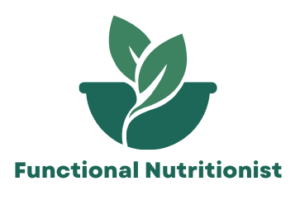How Food Deserts Are Affecting Communities
Imagine this: a wide, shining desert landscape under a hot Arizona sun. But instead of dunes of sand, picture grocery stores sprinkled here and there, like they were mirages in the heat. These are called food deserts-a hidden crisis for thousands of Arizonans. This is a weird phenomenon functional nutritionist encounters at times: fresh, healthy foods are as rare as snowstorms in Phoenix.

Let’s walk around Phoenix. Busy, buzzing, and in some areas, trying to find an apple or a bunch of carrots can make it some kind of adventure. People travel several miles just to get to the essentials. Of course, it’s not something that would get in the way of people, but shapes lives, health, and futures. How can anyone start down the path of a healthier life if the local grocery store may as well be on Mars?
Meet Rosa, a mom with two jobs and three kids. As would be assumed, her trip for groceries isn’t to the corner store but an amazing 20 miles to the nearest supermarket. Schedules and budgets are juggled, with each dollar being stretched to bring home those apples and carrots. This is no chore; this is her mission.
Instead, communities are rallying like never before. It is a time when empowered and energized Arizonans step forward and rise up to fill the chasm left by absent stores. Innovative efforts- from pop-up farmers’ markets that materialize on unlikely corners to sprouting urban gardens-resemble resilient wildflowers. These are not just efforts to fill bellies but to nourish spirits in fueling a healthier tomorrow.
Take the story of Jack, who started off as a local mechanic and became an urban gardener. Sick and tired of the minimal food options, one day Jack decided his backyard didn’t have to be just a patch of grass. That little patch today is a full-fledged garden. His neighbors come and pick up his fresh produces of zucchinis and tomatoes, share recipes, and swap stories. It’s not about the food; community and connection are sprouting with every budding plant.
On the other side of town, where tech meets tradition, mobile apps help people get a sense of where within this vastness a farmer’s market oasis or a pop-up veggie stall would be, turning food hunting into an adventurous exploration. Almost as if the bonding in shared struggle and triumph over these barren food landscapes has joined everyone together.
Even schools cannot be left out of this dance. Desert-raised children know how to make their own foods. Here, knowledge is spiced with a green thumb put to work. Kids get their hands dirty, digging into the earth to sow seeds of change, class after class. They rethink their surroundings in terms of food and, bit by bit, learn from that magic of soil to sustenance.
Fighting food deserts feels like a losing battle. It’s so monumental; it has enough obstacles that resemble a desert search for water. Still, one thing about the Arizonans: a lot of grit-namely, most of them have a lot of grit, but even more important, though, is they have one another. Thus, community spirit would never be so different from the rise of Phoenix itself if one becomes overwhelmed.
New heroes rise; they don’t have capes but wield shovels and delivery truck-steering wheels unloading a truckload of vegetables and fresh fruits. Say hello to Rosie and her pop-up fruit stand, or Paul, the deliveryman who calls everyone by the first name. Unsung legends plant the seed of hope, day in and day out, delivery after delivery.
Arizonans Unite Against Malnutrition
In arid Arizona, the war against malnutrition is pursued aggressively. Here, functional nutritionists are not just a name but a force. Here, the mix of science and compassion tries to put a brake on the reverse of a trend so unkind: local malnutrition. The state doesn’t press fruit for juice; it navigates oceans of ills with determination and creativity, and for such challenges, who but the people of Arizona create a healthy life for all? Through Phoenix, shadows of food deserts sprawl long and far. Hope sprouts from the cracks in the driven souls of the city amidst the concrete and dust. There is, for example, a troop of volunteers armed with hoe, seeds, and a dream that works in a community garden. And with those weapons, little pieces of earth transform into fresh produce. Who would have thought chard was the name of the town? Not only does the community garden sow fresh veggies, but also eagerness. What’s their secret? Collaboration-just listen up and share the harvest.
Meanwhile, a grassroots Tucson effort, Let’s Grow Together, teaches not only what to eat but how to grow it. At their workshops, families get a surge of excitement while conquering the subtle art of gardening in a desert climate. And the kids? Little gardeners themselves, fingers dipped in soil, learn life’s lessons as they labor. The harvest feeds more than just the belly; it feeds the soul.
But other heroes don aprons and wield pots. Food banks across Arizona are steaming ahead, opting for healthy choices when so often it’s easier to default. Gone are the days of solely canned options, sitting and gathering dust. In come fresh fruits, lean proteins, and whole grains courtesy of renegotiated partnerships. Creative recipes bubble in nonprofit kitchens. That zesty quinoa salad may just make you change your mind about flavor forever.
And education hasn’t gone without its fair share in this crusade. The Arizona Nutrition Network preaches food literacy through workshops that feel like storytelling seminars, where the participants leave with fantastic stories of feasts high in nutrients. Picture a room full of eager faces listening to tales of nutrient-rich feasts. The result? Creating curiosity among young and old, effecting healthier eating practices at home. I say, once one finds the depth of Kale, it’s never going back.
Arizonans bond over their differences, using that diversity to further strengthen the causes. Local chefs and food critics are among those contributing their expertise to challenge people to adopt sustainable ways of cooking. A local chef may carry a pop-up restaurant into a school, thereby making the cafeteria hours moments of epiphany. It’s where the taste buds get schooled, and whole grains give pizza a run for its money.
Technology-a hungry beast but one used wisely-connects these efforts from the local level. Communities leverage apps that allow tracking, connecting, and extension of such efforts. Imagine farm-fresh vegetables with just one swipe of your smartphone. Grocery stores become partners in transferring non-movers into hands and homes that appreciate them most. In all, this is a digital dance where urban tech joins up with rural solutions to make sure no nutrient goes to waste.
Let’s not forget the face of such triumphs-the ordinary wielding extraordinary power. You see, in Arizona, commitment to health has a face and a name. You might run into Maria at the community center, juggling two jobs yet somehow finding time to lead nutrition workshops. More often, it is Sarah from down the road bringing in excess vegetables from her garden to a local shelter.








